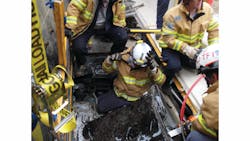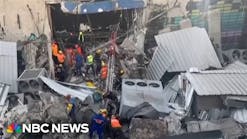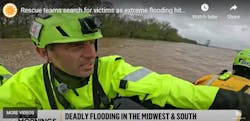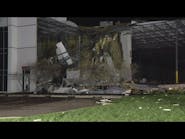Developing an Incident Accident Plan for Rescue Operations
The old saying "every incident starts and ends at the local level," always seems to hold true. So what happens when you are the company or department that “starts” the event?
From the arrival of the initial piece of equipment, the long-term outcomes are directly affected by your actions. Whether you are from a major metropolitan area or a remote rural department, many of the challenges and situations you face will be the same. The responder’s attention to detail will play a big part in the successful flow of a technical rescue incident.
Capturing and communicating the information is imperative. Early arriving companies should try to develop as detailed of a picture of the event as possible. Many of the sources of knowledge (bystanders, witnesses, victims) will disappear shortly after your arrival, so if you don’t capture this information early on their value will soon be lost.
Remember as the incident escalates, the operational footprint grows at a pace that is very difficult to manage without a plan in place.
A standardized method of capturing and organizing incident information is through the utilization of established incident command system (ICS) forms to compile this information in an orderly manner. Every chief officer and company level officer should be familiar with these forms. As a part your agency's professional development, these skills should also be passed along to department members as a part of their department level training.
It should be noted that there are a number of versions of many of the ICS forms used in the emergency response community. The base content remains the same in all of the forms; however, the flow and look may vary.
The Incident Briefing - ICS 201
The ICS 201 (download sample form here) is designed to gather basic information regarding the incident situation and the resources allocated to the incident. It functions as an initial action worksheet and also serves as a permanent record of the initial response to the incident. The form can be prepared by the incident commander or their designee. Remember, even as a junior officer on scene until relieved by a senior officer, you are the “incident commander” at that event.
The ICS 201 can also serve as a part of the initial incident action plan (IAP).
Knowing how to navigate this and any other ICS form will make your job much easier. Here is a review of the key activity portions of the ICS 201:
Map/Sketch – here you can provide a sketch of the area of operations, the incident site/area impacted and threatened areas and other pertinent detail by painting a visual picture of the incident.
Situation Summary and Health and Safety Briefing – initially this will provide you a location to log the safety items you observe or have been made aware of at the incident. As the incident unfolds these items are valuable for briefings or transfer of command. This is the area where you will list the necessary measures to protect responders from the identified hazards.
Current and Planned Objectives – here you will list your objectives that are now in place as well as those you have developed for future operations.
When preparing objectives, the acronym SMART helps you develop well-rounded and functional objectives:
Specific: objectives should be specific about the results, not about the way that they will be achieved (strategic not tactical)
Measurable: a few of the common types of measurable are: quantity, time, quality and cost-efficiency.
Achievable: should be sufficiently challenging, however, not to the degree that they cannot be accomplished.
Relevant: should be important to your organization’s mission.
Timely: should be written so that they can be accomplished during an operational period whenever possible.
Current and Planned Actions, Strategies and Tactics – list the current and planned actions, strategies, and tactics and the time they occur as related to the previously established objectives.
Current Organizations – as your incident expands, this section will allow you a place to account for who is assigned to various leadership positions with your event. This is also a good place for your first-arriving officers to track accountability prior to a more formal system being activated.
Resource Summary – this section provides you with an organized platform to track your on-hand assets, requested resources and the status of each of those resources. The notes section also provides a place for you to record the specifics related to where they are assigned, their status and their locate
Include Planning During Training
Some of you may be thinking that you won’t have time for all of that paperwork; or you have work to do and that this is not important. Here is an update folks; the fire service has and is evolving. Yes you do have time and the information you need to guide you through the incident is at your fingertips and will take very little time out of the “getting busy” phase of your response.
A good way to become comfortable with this form or any others your department utilizes is to include them in regular training sessions. To practice with the ICS 201; your training officer can put together a scenario and have you complete the form as a group, which will allow you to help each other during the training session. One other method is to use an actual event that has taken place in your community. This method is especially useful as it puts people into a situation that they have actual knowledge of, thus providing a real-life example of how these forms can benefit their long-term operations.
Many times incident commanders young and old become overwhelmed by the magnitude of the incident they have responded to. Always remember that if you break down a large event into manageable pieces you have a much greater chance at a successful outcome.
BOB DUEMMEL is the technical rescue editor for Firehouse Magazine and Firehouse.com. He is also the deputy coordinator for Special Operations in Monroe County, NY, and a captain with the City of Rochester Fire Department. He is the Plans Manager for New York Task Force-2 USAR Team, a member of the Western New York Incident Management Team and a member of the New York State Technical Rescue curriculum development team. He is a nationally certified instructor with a focus on technical rescue programs. He has delivered training to fire service, industrial, military and international rescue teams and has assisted with exercise evaluation for the United Kingdom and the European Union's USAR program. Bob has also participated in numerous USAR exercised as both a participant and evaluator. He is host of “The Buzz on Technical Rescue” podcast. Bob can be reached at [email protected].






